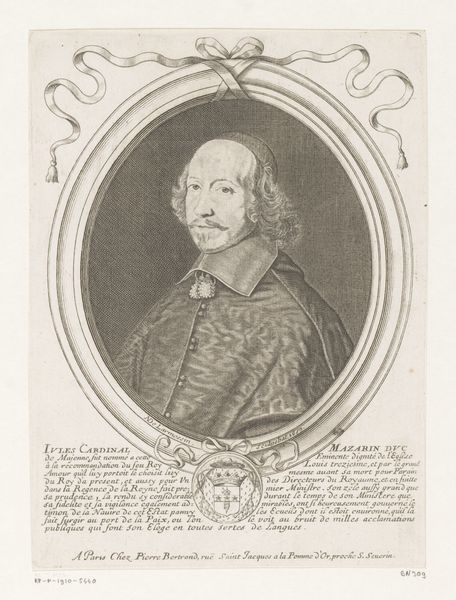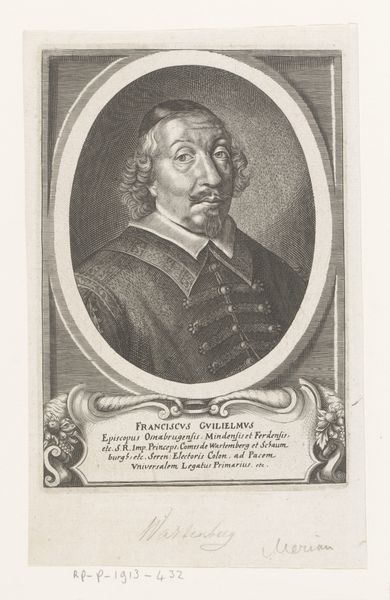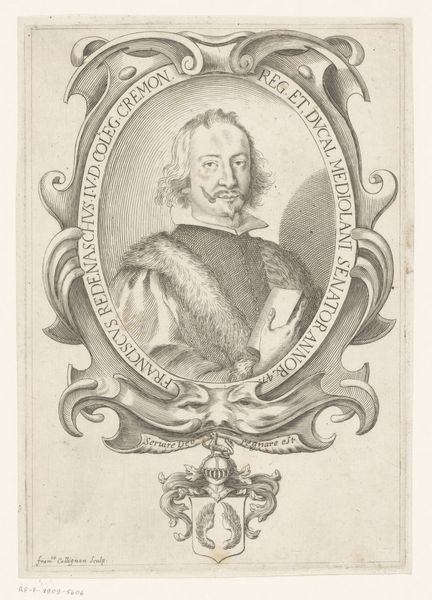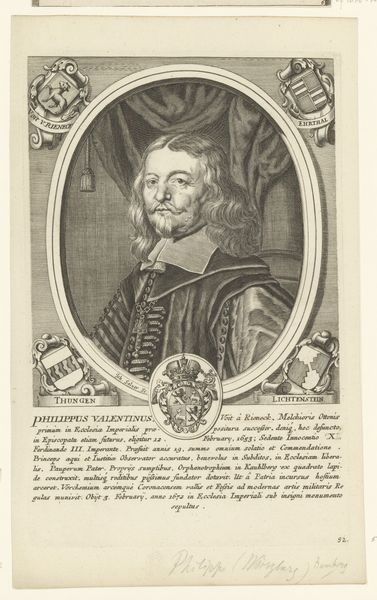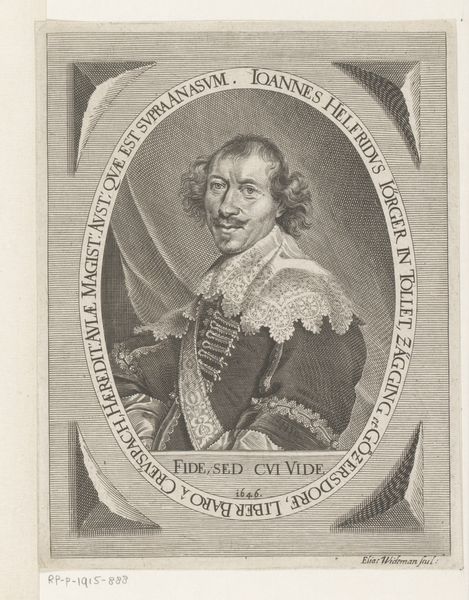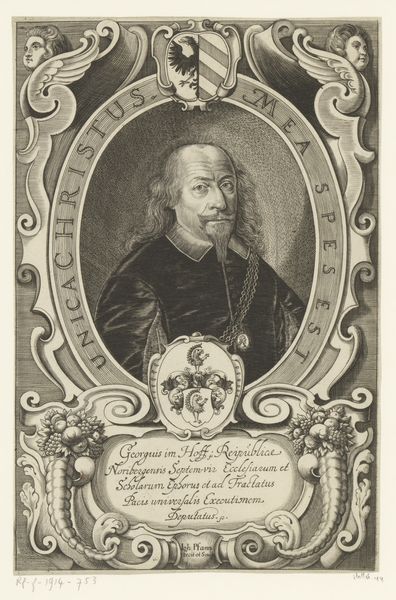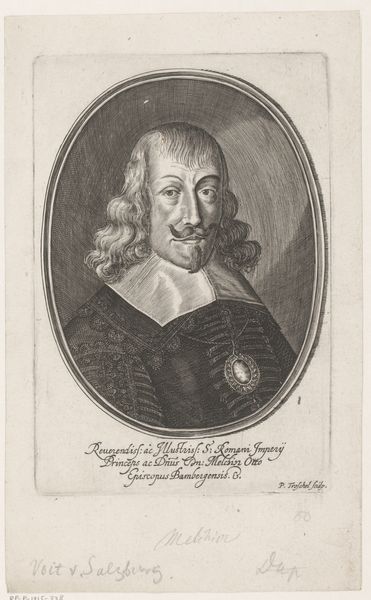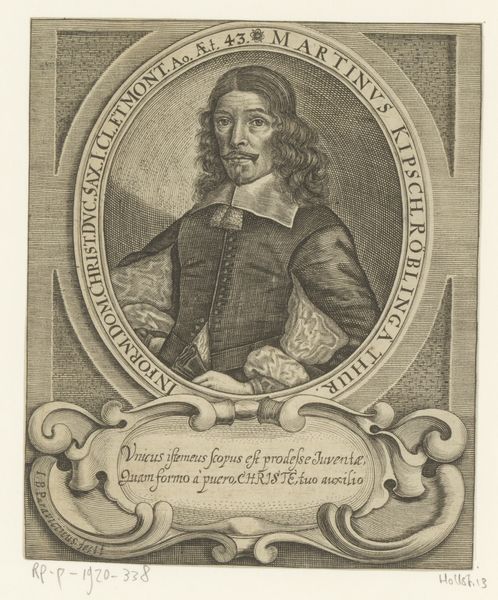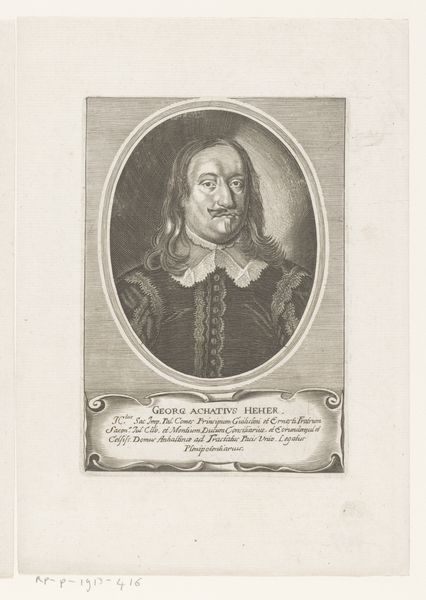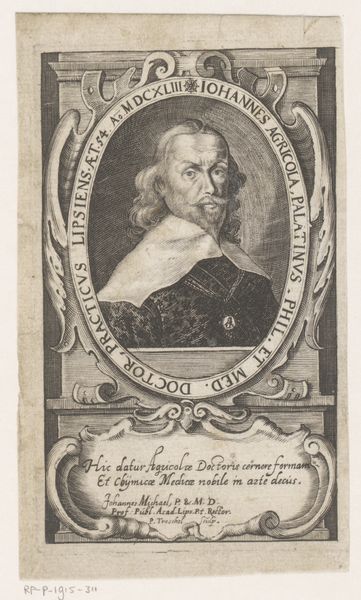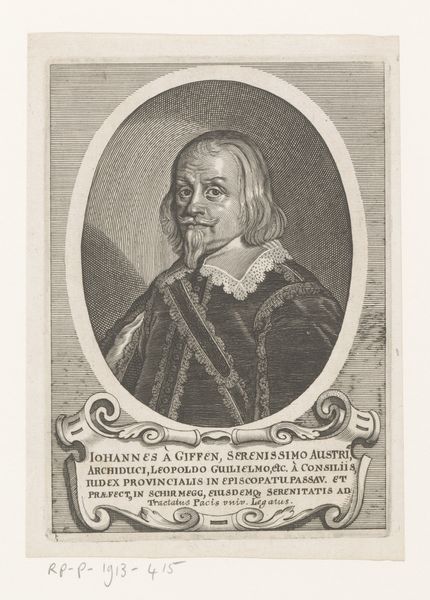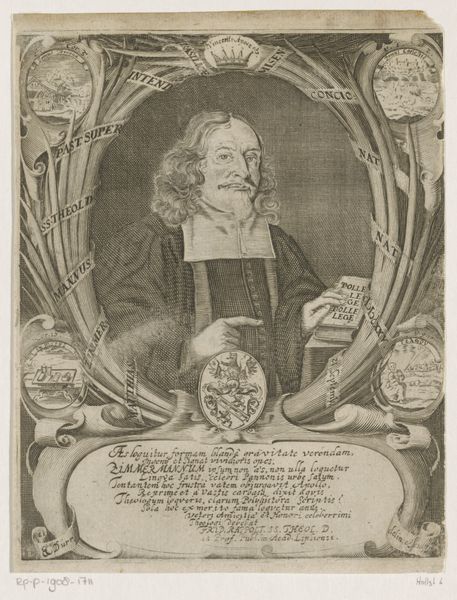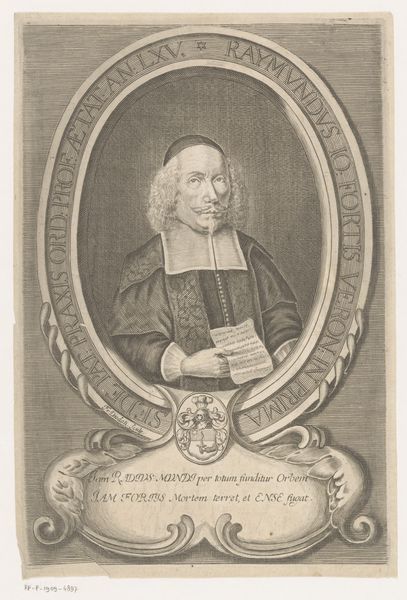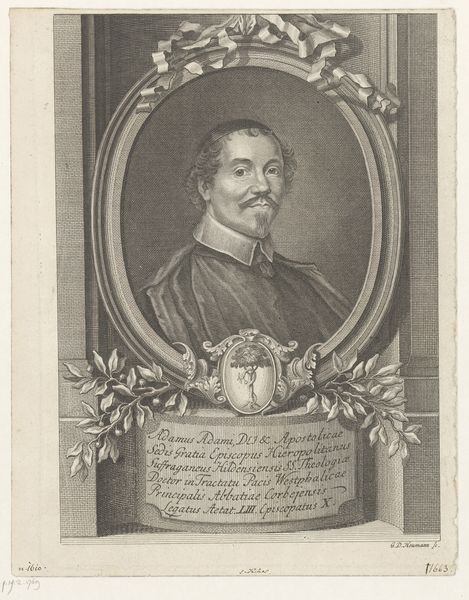
Dimensions: height 176 mm, width 128 mm
Copyright: Rijks Museum: Open Domain
Editor: This is "Portrait of Johann Konrad Varnbüler," an engraving made in 1652 by Matthäus Merian I. I find it so intriguing how much detail they could achieve with just lines on a plate. What jumps out at you about it? Curator: The level of detail is impressive, but what truly captivates me is understanding how this print functioned within its society. Engravings were a form of mass production; this portrait, duplicated many times over, disseminated Varnbüler’s image and, therefore, his power. Consider the labour involved: the engraver’s skill, the printer’s effort, the distribution network. This wasn’t just about aesthetics; it was about manufacturing reputation. Editor: So you're saying the value isn't necessarily in the artistry but in its role as a tool? Curator: Precisely! It is fascinating to consider the metal plate itself. What grade of metal was used? Where was it mined and by whom? We must consider that portraits were usually exclusive to the elites but engravings brought access to more people, but still wasn't democratised at the time due to literacy limitations, mostly only influencing elites. It begs the question, how did its distribution impact society? Editor: That's a completely different way of thinking about it than I expected! I was so focused on the person in the portrait, I never stopped to consider all of that. Curator: The subject is just one piece. Material analysis pushes us to think beyond the individual and consider the wider systems of production, consumption, and social control that shaped even a single portrait. Editor: That really broadens my understanding of art's function in society. I'll definitely look at art with a different perspective from now on!
Comments
No comments
Be the first to comment and join the conversation on the ultimate creative platform.
